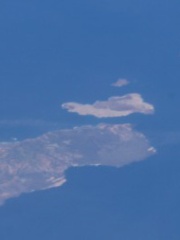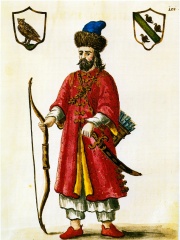
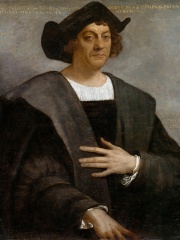

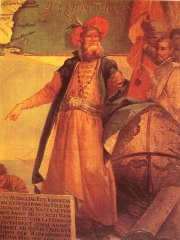
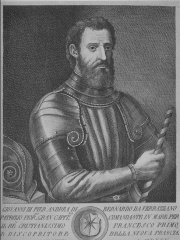
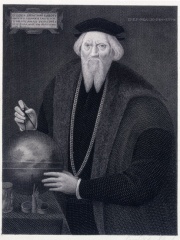
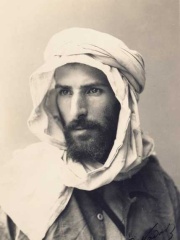
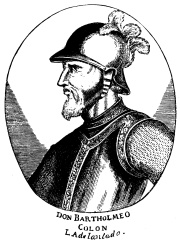
The Most Famous
EXPLORERS from Italy
Top 10
The following people are considered by Pantheon to be the top 10 most legendary Italian Explorers of all time. This list of famous Italian Explorers is sorted by HPI (Historical Popularity Index), a metric that aggregates information on a biography's online popularity. Visit the rankings page to view the entire list of Italian Explorers.

1. Marco Polo (1254 - 1324)
With an HPI of 96.21, Marco Polo is the most famous Italian Explorer. His biography has been translated into 180 different languages on wikipedia.
Marco Polo (c. 1254 – 8 January 1324) was a Venetian merchant, explorer, and writer who travelled through Asia along the Silk Road between 1271 and 1295. His travels are recorded in The Travels of Marco Polo (also known as Book of the Marvels of the World and Il Milione, c. 1300), a book that described the then-mysterious culture and inner workings of the Eastern world, including the wealth and great size of the Mongol Empire and China under the Yuan dynasty, giving Europeans their first comprehensive look into China, Persia, India, Japan, and other Asian societies. Born in Venice, Marco learned the mercantile trade from his father and his uncle, Niccolò and Maffeo, who travelled through Asia and met Kublai Khan. In 1269, they returned to Venice to meet Marco for the first time. The three of them embarked on an epic journey to Asia, exploring many places along the Silk Road until they reached "Cathay". They were received by the royal court of Kublai Khan, who was impressed by Marco's intelligence and humility. Marco was appointed to serve as Kublai's foreign emissary, and he was sent on many diplomatic missions throughout the empire and Southeast Asia, visiting present-day Myanmar, India, Indonesia, Sri Lanka, and Vietnam. As part of this appointment, Marco also travelled extensively inside China, living in the emperor's lands for 17 years and seeing many things previously unknown to Europeans. Around 1291, the Polos offered to accompany the Mongol princess Kököchin to Persia; they arrived there around 1293. After leaving the princess, they travelled overland to Constantinople and then to Venice, returning home after 24 years. At this time, Venice was at war with Genoa. Marco joined the war effort on behalf of Venice and was captured by the Genoans. While imprisoned, he dictated stories of his travels to Rustichello da Pisa, a cellmate. He was released in 1299, became a wealthy merchant, married, and had three children. He died in 1324 and was buried in the church of San Lorenzo in Venice. Though he was not the first European to reach China, Marco Polo was the first to leave a detailed chronicle of his experience. His account provided the Europeans with a clear picture of the East's geography and ethnic customs, and it included the first Western record of porcelain, gunpowder, paper money, and some Asian plants and exotic animals. His narrative inspired Christopher Columbus and many other travellers. There is substantial literature based on Polo's writings; he also influenced European cartography, leading to the introduction of the Catalan Atlas and the Fra Mauro map.

2. Christopher Columbus (1451 - 1506)
With an HPI of 94.91, Christopher Columbus is the 2nd most famous Italian Explorer. His biography has been translated into 208 different languages.
Christopher Columbus (; between 25 August and 31 October 1451 – 20 May 1506) was an Italian explorer and navigator from the Republic of Genoa who completed four Spanish-based voyages across the Atlantic Ocean sponsored by the Catholic Monarchs, opening the way for the widespread European exploration and colonization of the Americas. His expeditions were the first known European contact with the Caribbean and Central and South America. The name Christopher Columbus is the anglicization of the Latin Christophorus Columbus. Growing up on the coast of Liguria, he went to sea at a young age and traveled widely, as far north as the British Isles and as far south as what is now Ghana. He married Portuguese noblewoman Filipa Moniz Perestrelo, who bore a son, Diego, and was based in Lisbon for several years. He later took a Castilian mistress, Beatriz Enríquez de Arana, who bore a son, Ferdinand. Largely self-educated, Columbus was knowledgeable in geography, astronomy, and history. He developed a plan to seek a western sea passage to the East Indies, hoping to profit from the lucrative spice trade. After the Granada War, and Columbus's persistent lobbying in multiple kingdoms, the Catholic Monarchs, Queen Isabella I and King Ferdinand II, agreed to sponsor a journey west. Columbus left Castile in August 1492 with three ships and made landfall in the Americas on 12 October, ending the period of human habitation in the Americas now referred to as the pre-Columbian era. His landing place was an island in the Bahamas, known by its native inhabitants as Guanahani. He then visited the islands now known as Cuba and Hispaniola, establishing a colony in what is now Haiti. Columbus returned to Castile in early 1493, with captured natives. Word of his voyage soon spread throughout Europe. Columbus made three further voyages to the Americas, exploring the Lesser Antilles in 1493, Trinidad and the northern coast of South America in 1498, and the east coast of Central America in 1502. Many of the names given to geographical features by Columbus, particularly the names of islands, are still in use. He gave the name indios ('Indians') to the indigenous peoples he encountered. The extent to which he was aware that the Americas were a wholly separate landmass is uncertain; he never clearly renounced his belief he had reached the Far East. As a colonial governor, Columbus was accused by some of his contemporaries of significant brutality and removed from the post. Columbus's strained relationship with the Crown of Castile and its colonial administrators in America led to his arrest and removal from Hispaniola in 1500, and later to protracted litigation over the privileges he and his heirs claimed were owed to them by the Crown. Columbus's expeditions inaugurated a period of exploration, conquest, and colonization that lasted for centuries, thus bringing the Americas into the European sphere of influence. The transfer of plants, animals, precious metals, culture, human populations, technology, diseases, and ideas between the Old World and New World that followed his first voyage are known as the Columbian exchange, named after him. These events and the effects which persist to the present are often cited as the beginning of the modern era. Diseases introduced from the Old World contributed to the genocide of Hispaniola's indigenous Taíno people, who were also subject to enslavement and other mistreatments by Columbus's government. Increased public awareness of these interactions has led to Columbus being less celebrated in Western culture, which has historically idealized him as a heroic discoverer. Numerous places have been named for him.

3. Amerigo Vespucci (1454 - 1512)
With an HPI of 86.55, Amerigo Vespucci is the 3rd most famous Italian Explorer. His biography has been translated into 105 different languages.
Amerigo Vespucci (9 March 1454 – 22 February 1512) was an Italian explorer, navigator and popular author from the Republic of Florence after whom America is named. Vespucci participated in at least two voyages of the Age of Discovery between 1497 and 1504, first on behalf of Spain (1499–1500) and then for Portugal (1501–1502). In 1503 and 1505, two booklets were published under his name containing colourful descriptions of these explorations and other voyages. Both publications were extremely popular and widely read throughout much of Europe. Historians still dispute the authorship and veracity of these accounts, but they were instrumental in raising awareness of the discoveries and enhancing the reputation of Vespucci as an explorer and navigator. Vespucci claimed to have understood in 1501 that Brazil was part of a fourth continent unknown to Europeans, which he called the "New World" (Mundus Novus). The claim inspired cartographer Martin Waldseemüller to recognize Vespucci's accomplishments in 1507 by applying the Latinized form "America" to a map showing the New World. Other cartographers followed suit, securing the tradition of marking the name "America" on maps of the newly discovered continents. It is unknown whether Vespucci was ever aware of these honours. In 1505, he was made a subject of Castile by royal decree, and he was appointed to the position of piloto mayor (master navigator) for Spain's Casa de Contratación (House of Trade) in Seville in 1508, a post which he held until his death in 1512.

4. John Cabot (1450 - 1498)
With an HPI of 74.69, John Cabot is the 4th most famous Italian Explorer. His biography has been translated into 68 different languages.
John Cabot (Italian: Giovanni Caboto [dʒoˈvanni kaˈbɔːto]; c. 1450 – c. 1499) was an Italian navigator and explorer. His 1497 voyage to the coast of North America under the commission of Henry VII, King of England is the earliest known European exploration of coastal North America since the Norse visits to Vinland in the eleventh century. To mark the celebration of the 500th anniversary of Cabot's expedition, both the Canadian and British governments declared Cape Bonavista, Newfoundland as representing Cabot's first landing site. However, alternative locations have also been proposed.
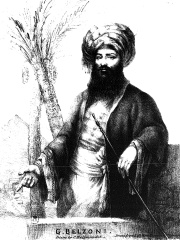
5. Giovanni Battista Belzoni (1778 - 1823)
With an HPI of 72.46, Giovanni Battista Belzoni is the 5th most famous Italian Explorer. His biography has been translated into 44 different languages.
Giovanni Battista Belzoni (Italian pronunciation: [dʒoˈvanni batˈtista belˈtsoːni]; 5 November 1778 – 3 December 1823), sometimes known as The Great Belzoni, was a prolific Italian explorer and pioneer archaeologist of Egyptian antiquities. He is known for his removal to England of the seven-tonne bust of Ramesses II, the clearing of sand from the entrance of the great people at Abu Simbel, the discovery and documentation of the tomb of Seti I (still sometimes known as "Belzoni's Tomb"), including the sarcophagus of Seti I, and the first to penetrate into the Pyramid of Khafre, the second pyramid of the Giza complex.

6. Giovanni da Verrazzano (1485 - 1528)
With an HPI of 71.94, Giovanni da Verrazzano is the 6th most famous Italian Explorer. His biography has been translated into 50 different languages.
Giovanni da Verrazzano ( VERR-ə-ZAH-noh, -ət-SAH-, Italian: [dʒoˈvanni da (v)verratˈtsaːno]; often misspelled Verrazano in English; 1491–1528) was an Italian explorer from the Republic of Florence, best known for his expedition to North America. He led most of his later missions, including the one to America, in the service of King Francis I of France. He is renowned as the first European to ever explore the Atlantic coast of North America between Florida and New Brunswick in 1524, including New York Bay and Narragansett Bay.

7. Sebastian Cabot (1484 - 1557)
With an HPI of 68.19, Sebastian Cabot is the 7th most famous Italian Explorer. His biography has been translated into 32 different languages.
Sebastian Cabot (Italian and Venetian: Sebastiano Caboto, Italian: [sebaˈstjaːno kaˈbɔːto]; Spanish: Sebastián Caboto, Gaboto or Cabot; c. 1474 – c. December 1557) was a Venetian explorer, who at various times was in the service of the Kingdom of England, the Crown of Aragon and the Holy Roman Emperor. Cabot was likely born in the Venetian Republic and as such may have been a Venetian citizen, however this has never been confirmed. Cabot himself gave varying accounts of his national origins to different audiences, such as claiming to have been born in Bristol, England. He was the son of Venetian explorer John Cabot (Giovanni Caboto) and his Venetian wife Mattea and he grew up in England during his youth. After his father's death, Cabot conducted his own voyages of discovery, charting the Eastern American seaboard and seeking the Northwest Passage on behalf of England. He later sailed for Spain, traveling to South America, where he explored the Rio de la Plata and established two new forts.

8. Pierre Savorgnan de Brazza (1852 - 1905)
With an HPI of 68.17, Pierre Savorgnan de Brazza is the 8th most famous Italian Explorer. His biography has been translated into 44 different languages.
Pierre Paul François Camille Savorgnan de Brazza (born Pietro Paolo Savorgnan di Brazzà; 26 January 1852 – 14 September 1905) was an Italian-French explorer. With his family's financial help, he explored the Ogooué region of Central Africa, and later with the backing of the Société de Géographie de Paris, he reached far into the interior along the right bank of the Congo River. He has often been depicted as a man of friendly manner, great charm and peaceful approach towards the Africans he met and worked with on his journeys. Under French colonial rule, the capital of the Republic of the Congo was named Brazzaville after him and the name was retained by the post-colonial rulers.

9. Bartholomew Columbus (1460 - 1515)
With an HPI of 67.45, Bartholomew Columbus is the 9th most famous Italian Explorer. His biography has been translated into 30 different languages.
Bartholomew Columbus (Genoese: Bertomê Corombo; Portuguese: Bartolomeu Colombo; Spanish: Bartolomé Colón; Italian: Bartolomeo Colombo; c. 1461 – 12 August 1514) was a Genoese explorer and the younger brother of Christopher Columbus.
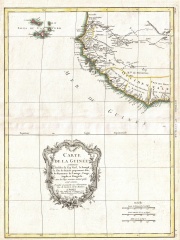
10. Alvise Cadamosto (1432 - 1488)
With an HPI of 66.56, Alvise Cadamosto is the 10th most famous Italian Explorer. His biography has been translated into 28 different languages.
Alvise Cadamosto (surname cf. Ca' da Mosto, da Cadamosto, da Ca' da Mosto; also known in Portuguese as Luís Cadamosto; mononymously Cadamosto) (Portuguese pronunciation: [alˈvizɨ kɐðaˈmoʃtu]; Italian pronunciation: [alˈvize ˌkadaˈmosto]) (c. 1432 – 16 July 1483) was a Venetian explorer and slave trader, who was hired by the Portuguese prince Henry the Navigator and undertook two known journeys to West Africa in 1455 and 1456, accompanied by the Genoese captain Antoniotto Usodimare. Some have credited Cadamosto and his companions with the discovery of the Cape Verde Islands and the points along the Guinea coast from the Gambia River to the Geba River (in Guinea-Bissau), the greatest leap in the Henrican discoveries since 1446. Cadamosto's accounts of his journeys, including his detailed observations of West African societies, have proven invaluable to historians.
People
Pantheon has 17 people classified as Italian explorers born between 1254 and 1852. Of these 17, none of them are still alive today. The most famous deceased Italian explorers include Marco Polo, Christopher Columbus, and Amerigo Vespucci.
Deceased Italian Explorers
Go to all RankingsMarco Polo
1254 - 1324
HPI: 96.21
Christopher Columbus
1451 - 1506
HPI: 94.91
Amerigo Vespucci
1454 - 1512
HPI: 86.55
John Cabot
1450 - 1498
HPI: 74.69
Giovanni Battista Belzoni
1778 - 1823
HPI: 72.46
Giovanni da Verrazzano
1485 - 1528
HPI: 71.94
Sebastian Cabot
1484 - 1557
HPI: 68.19
Pierre Savorgnan de Brazza
1852 - 1905
HPI: 68.17
Bartholomew Columbus
1460 - 1515
HPI: 67.45
Alvise Cadamosto
1432 - 1488
HPI: 66.56
Lancelotto Malocello
1270 - 1336
HPI: 63.62
Niccolò de' Conti
1395 - 1469
HPI: 63.53
Overlapping Lives
Which Explorers were alive at the same time? This visualization shows the lifespans of the 5 most globally memorable Explorers since 1700.

